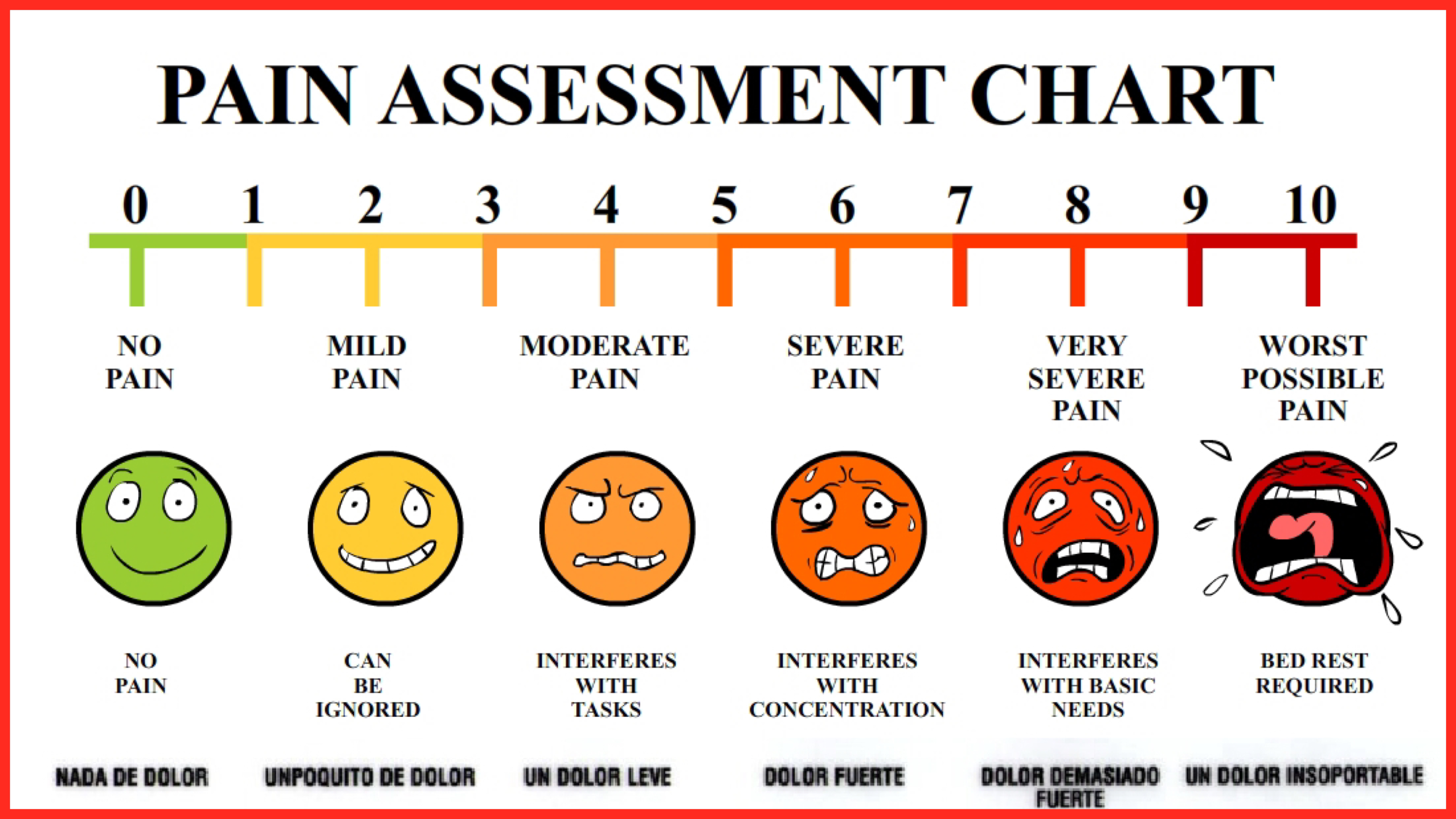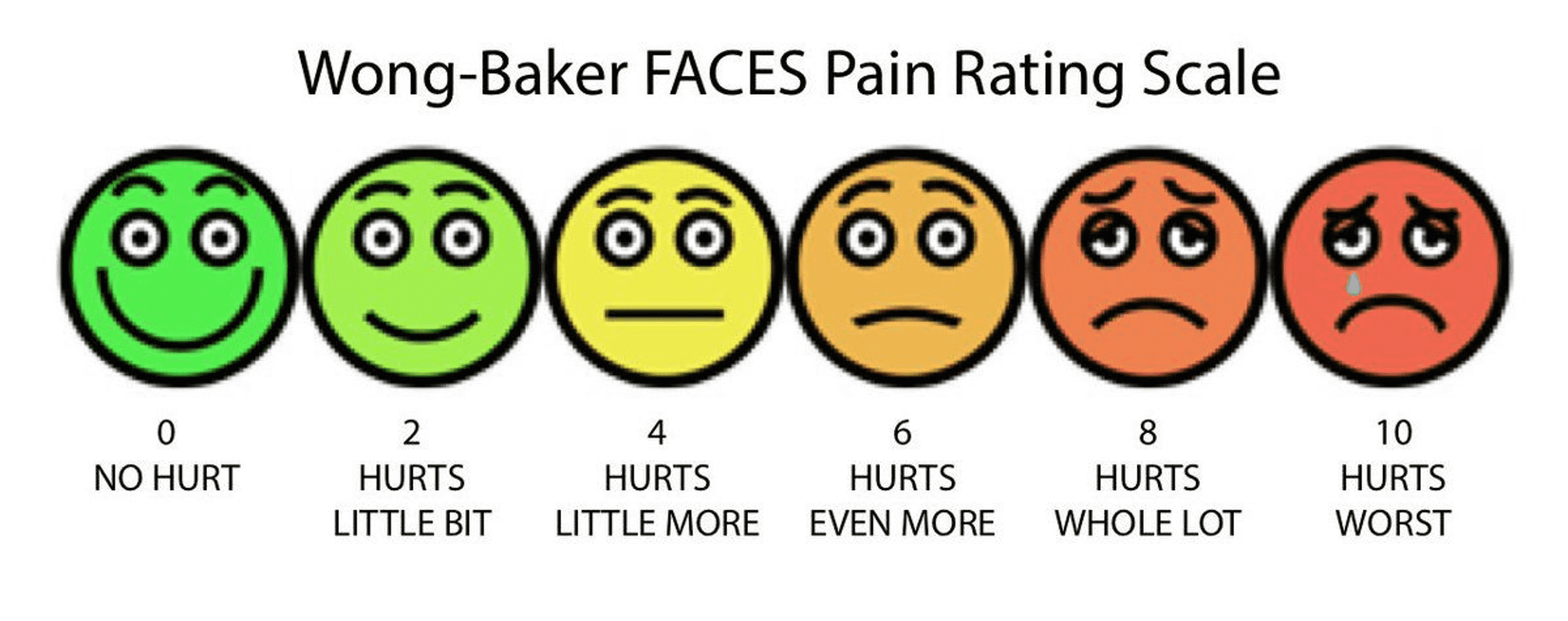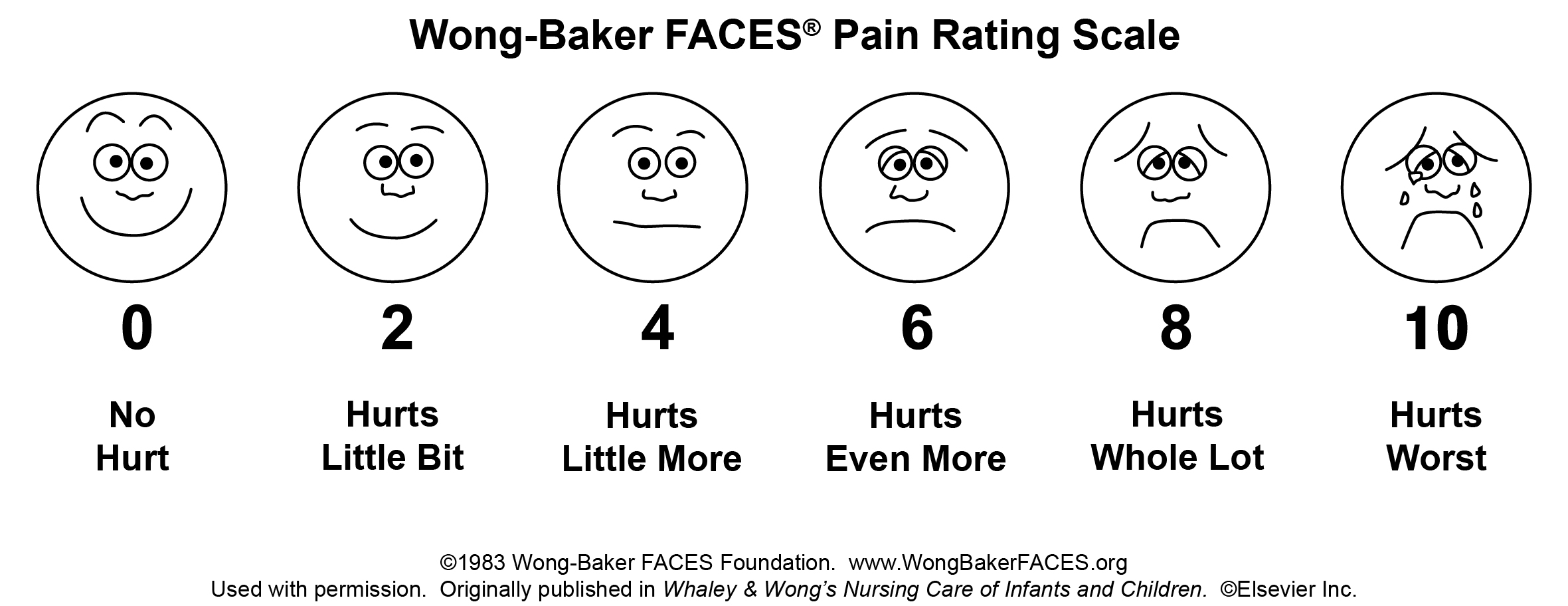Printable Pain Scale With Faces
Printable Pain Scale With Faces - Infants should be observed for one minute in order to fully assess each indicator. Explain to the person that each face is for a person who feels happy because he has no pain (no hurt) or sad because he has some or a lot of pain. Ask the person to choose the face that best describes how he is feeling. Point to each face using the words to describe the pain intensity. Face 0 is very happy because he doesn’t hurt at all. Face 2 hurts a little more. Web face 4 hurts a whole lot. Web our printable pain scale chart is a handy reference for people in pain to be able to point to the current pain level they are experiencing. It is a scale that can be reliably and validly used in young children, with minimal cognitive demands. Poster, 6th international symposium on paediatric pain, special interest group Web see the nips scale for the description of infant behavior in each indicator group. Face 5 hurts as much as you can image, although you don’t have to be crying to feel this bad. Face 1 hurts just a little bit. Point to each face and say the words under the face. Translation and adaptation for use in many. The suggested interventions based upon the. Face 6 hurts even more. Web the faces pain scale shows reliability and consistency when pain ratings are assigned by children, especially as they are associated with related pain experiences. You could also use the printable pdf to guide you as well. Face 1 hurts just a little bit. Point to the face that shows how bad your pain is right now.” Web the scale consists of six faces that range from no pain at all to the worst pain imaginable. Face 4 hurts a little bit more. Uses a horizontal line, illustrated by facial expressions to represent different pain levels. Face 2 hurts a little more. Web my pain rating scale* explain to your child that each face is for a person who has no hurt (pain) or some or a lot of hurt (pain). Web face 3 hurts even more. Face 5 hurts as much as you can image, although you don’t have to be crying to feel this bad. Web choose the face that. Ask the person to choose the face that best describes how he is feeling. Web explain to the person that each face is for a person who feels happy because he has no pain (no hurt) or sad because he has some or a lot of pain. Translation and adaptation for use in many cultures. Point to the face that. Record the number of that face in the pain rating column. The emotional faces range from smiling to grimacing. Rating scale is recommended for persons age 3. Point to each face and say the words under the face. Point to each face using the words to describe the pain intensity. It is a scale that can be reliably and validly used in young children, with minimal cognitive demands. The emotional faces range from smiling to grimacing. Face 2 hurts a little more. Face 2 hurts just a little bit. Web explain to the person that each face represents a person who has no pain (hurt), or some, or a lot. Explain to the person that each face is for a person who feels happy because he has no pain (no hurt) or sad because he has some or a lot of pain. Rating scale is recommended for persons age 3 years and older. Web my pain rating scale* explain to your child that each face is for a person who. Point to each face using the words to describe the pain intensity. Face 5 hurts as much as you can image, although you don’t have to be crying to feel this bad. Face 2 hurts just a little bit. Uses a horizontal line, illustrated by facial expressions to represent different pain levels. The emotional faces range from smiling to grimacing. The face on the left shows no pain. It is a scale that can be reliably and validly used in young children, with minimal cognitive demands. Adults and children (> 3 years old) in all patient care settings. Face 4 hurts a little bit more. Ask the person to choose the face that best describes how he is feeling. The emotional faces range from smiling to grimacing. Face 5 hurts as much as you can image, although you don’t have to be crying to feel this bad. Face 8 hurts a whole lot. Face 1 hurts just a little bit. Record the number of that face in the pain rating column. Face o doesn't hurt at all. Face 6 hurts even more. Use the faces or behavorial observations to interpret Web this pain assessment tool is intended to help patient care providers access pain accord.ng to individual parent needs. Point to each face using the words to describe the pain intensity. Face 0 is very happy because he doesn’t hurt at all. Face 0 doesn’t hurt at all. Face 3 hurts even more. Rating scale is recommended for persons age 3. You could also use the printable pdf to guide you as well. Web the scale consists of six faces that range from no pain at all to the worst pain imaginable.
Pain Level Chart With Faces

Printable Pain Scale With Faces

Printable Pain Scale Faces

Cureus Phase 2 Assessment of a New Functional Pain Scale by Comparing

Printable Pain Scale Faces
Printable Faces Pain Scale, Choose a word that best describes your pain

Printable Faces Pain Scale

Printable Faces Pain Scale Chart

Printable pain scale faces 1 10 delightvsa

110 Pain Chart Faces
The Face On The Left Shows No Pain.
“The Faces Show How Much Pain Or Discomfort Someone Is Feeling.
Rating Scale Is Recommended For Persons Age 3 Years And Older.
Face 5 Hurts As Much As You Can Image, Although You Don’t Have To Be Crying To Feel This Bad.
Related Post:
